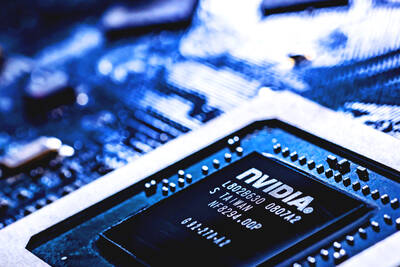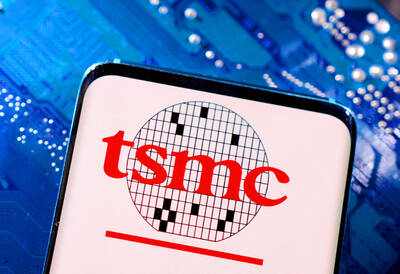Metal casing manufacturer Catcher Technology Co (可成科技) yesterday reported that sales reached NT$2 billion (US$68.88 million) last month, up 49 percent month-on-month, but down 8.01 percent year-on-year, supported by strong demand for HTC Corp’s (宏達電) and Apple Inc’s newly launched products.
In a filing submitted to Taiwan Stock Exchange, Catcher said that sales of its aluminum-magnesium alloy products produced NT$2 billion last month, while its rental revenue totaled NT$1.53 million. After deducting sales returns and discounts, which amounted to NT$10.42 million, Catcher said it made NT$2 billion in sales last month.
For the whole of last year, sales totaled NT$11.74 billion, a 29.15 percent decrease in comparison to the NT$16.57 billion made in 2011, the Yongkang District (永康), Greater Tainan-based company said.
On a consolidated basis, revenue stood at NT$3.76 billion last month, up 21.29 percent from NT$3.1 billion in November and a 15.66 percent increase compared with NT$3.25 billion from a year ago, Catcher said.
Total consolidated revenue for last year amounted to NT$37.03 billion, up 3.1 percent from NT$35.91 billion for the previous year, the company said.
“Catcher’s sales result was better than expected. The growth is likely to be sustained this year, supported by strong demand for Apple’s new iPhone 5 smartphone and iPad Mini tablet, which are both equipped with metal cases,” Green Wu (吳積霖), assistant vice president at Hua Nan Securities Investment Management (華南永昌投顧), said by telephone.
Wu said Catcher’s sales underperformed last year mainly because HTC, one of its major clients, chose to use polycarbonate materials, not metal, to design the case of its HTC One and HTC Butterfly flagship smartphone series.
However, as HTC is set to launch a brand new flagship smartphone series next month –– rumored as “M7” –– that will have a unibody metal-cased design, Wu forecast Catcher’s sales would continue to grow and are likely to achieve a high growth rate if major smartphone brands follow HTC’s lead to design more metal-cased smartphone models this year.
Mega Investment Trust Corp (兆豐國際投信) senior analyst Kevin Hsu (許鈞雄) said Catcher’s near-term performance would depends on HTC’s and Apple’s product strategies.
“In the short term, Catcher is expected to sustain its sales growth momentum through the second quarter because the market still has strong demand for the iPhone 5 and the iPad Mini, but it is hard to tell whether there would be a huge demand for metal-cased smartphones. Sales of HTC’s new ‘M7’ series could be an index,” Hsu said.
Catcher’s shares closed up 1.02 percent at NT$149 in Taipei trading yesterday, outperforming the broader market, which fell 0.39 percent. Over the last year, Catcher’s shares rose 2.49 percent, the stock exchange’s data showed.

When Lika Megreladze was a child, life in her native western Georgian region of Guria revolved around tea. Her mother worked for decades as a scientist at the Soviet Union’s Institute of Tea and Subtropical Crops in the village of Anaseuli, Georgia, perfecting cultivation methods for a Georgian tea industry that supplied the bulk of the vast communist state’s brews. “When I was a child, this was only my mum’s workplace. Only later I realized that it was something big,” she said. Now, the institute lies abandoned. Yellowed papers are strewn around its decaying corridors, and a statue of Soviet founder Vladimir Lenin

UNIFYING OPPOSITION: Numerous companies have registered complaints over the potential levies, bringing together rival automakers in voicing their reservations US President Donald Trump is readying plans for industry-specific tariffs to kick in alongside his country-by-country duties in two weeks, ramping up his push to reshape the US’ standing in the global trading system by penalizing purchases from abroad. Administration officials could release details of Trump’s planned 50 percent duty on copper in the days before they are set to take effect on Friday next week, a person familiar with the matter said. That is the same date Trump’s “reciprocal” levies on products from more than 100 nations are slated to begin. Trump on Tuesday said that he is likely to impose tariffs

HELPING HAND: Approving the sale of H20s could give China the edge it needs to capture market share and become the global standard, a US representative said The US President Donald Trump administration’s decision allowing Nvidia Corp to resume shipments of its H20 artificial intelligence (AI) chips to China risks bolstering Beijing’s military capabilities and expanding its capacity to compete with the US, the head of the US House Select Committee on Strategic Competition Between the United States and the Chinese Communist Party said. “The H20, which is a cost-effective and powerful AI inference chip, far surpasses China’s indigenous capability and would therefore provide a substantial increase to China’s AI development,” committee chairman John Moolenaar, a Michigan Republican, said on Friday in a letter to US Secretary of

Taiwan Semiconductor Manufacturing Co’s (TSMC, 台積電) market value closed above US$1 trillion for the first time in Taipei last week, with a raised sales forecast driven by robust artificial intelligence (AI) demand. TSMC saw its Taiwanese shares climb to a record high on Friday, a near 50 percent rise from an April low. That has made it the first Asian stock worth more than US$1 trillion, since PetroChina Co (中國石油天然氣) briefly reached the milestone in 2007. As investors turned calm after their aggressive buying on Friday, amid optimism over the chipmaker’s business outlook, TSMC lost 0.43 percent to close at NT$1,150